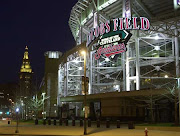 Major League Baseball may have a serious parasite to deal with in the next few years. No, not Jeffrey Loria, this one's more serious. The baseball bats produced from Pennsylvania's ash trees have long been the weapon of choice for major leaguers, but are in danger of being wiped out by an invasive species.
Major League Baseball may have a serious parasite to deal with in the next few years. No, not Jeffrey Loria, this one's more serious. The baseball bats produced from Pennsylvania's ash trees have long been the weapon of choice for major leaguers, but are in danger of being wiped out by an invasive species.Emerald Ash Borer (EAB) beetles have been wreaking havoc in the Great Lakes region since 2002 and are gradually closing in on Pennsylvania's baseball bat industry. The beetles focus exclusively on ash trees, which are not only an attractive food source and nesting site, but have no natural defenses against EABs.
The beetles are native to Asia and are thought to have been introduced to North America in wooden shipping crates from overseas. EABs are most heavily concentrated in Southeastern Michigan, but have spread to Ohio, Indiana, Illinois, Maryland, and Pennsylvania.
The beetles have killed more than 20 million ash trees and have cost municipalities, nurseries, and the forest products industry tens of millions of dollars.
Baseball bat companies are stockpiling supplies of ash and harvesting some trees earlier than normal in anticipation of a severe ash tree shortage. Ash has long been viewed as the prime material for making bats, with an ideal balance of hardness and flexibility. There has been a recent shift to maple and other species, but about half of modern major leaguers still choose ash bats.
Authorities in Michigan have already begun collecting seeds in the event the species is totally wiped out in the region. Rising climate trends will only exacerbate the problem. A warmer climate will lengthen the ash trees' growing season, compromising the structural integrity of the tree and making it more vulnerable to infestation.
Large-scale efforts to eradicate the pest are underway, with state wood quarantines, artificial buffer zones, and the release of a wasp that preys on EABs. Universities are currently researching the beetle to better understand its life cycle and how to kill it. Some serious government funding is coming down the pipeline as well.
The best way to prevent the spread of EABs in your area is to not transport firewood from your home to other locations. Firewood is a common way for the beetles to hitch a ride and infest new forests. Also, if you think an ash tree may be infected, call it in. Below are some links with more info:
Interesting article on the beetle's impact on baseball and what's being done.
More information on EABs, where they're found, and how to identify them.









2 comments:
Interesting...just found your site, I think I'd like to add you to the blogroll at Halftime Adjustments. Keep up the good work.
That's great, thanks!
Post a Comment